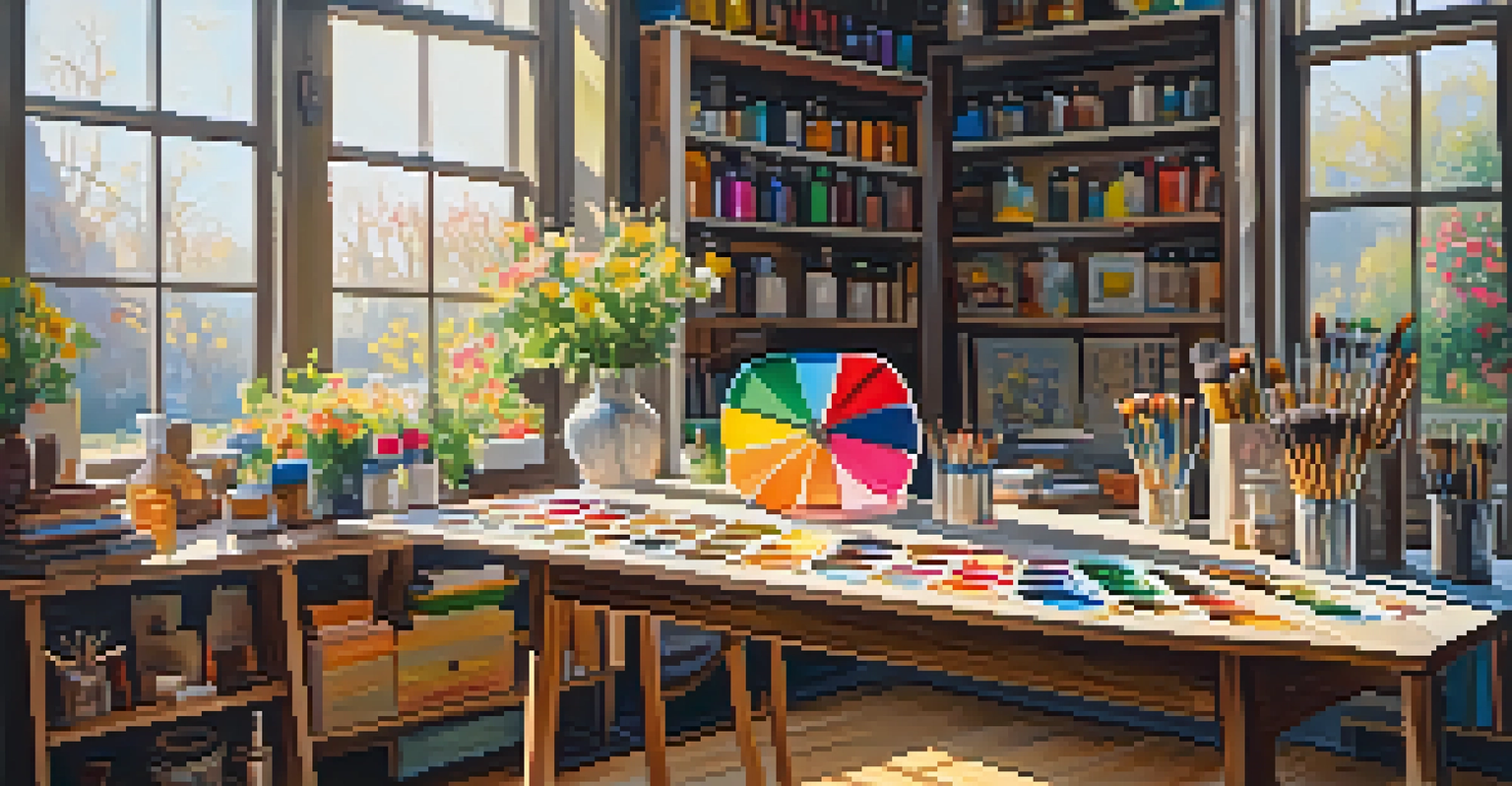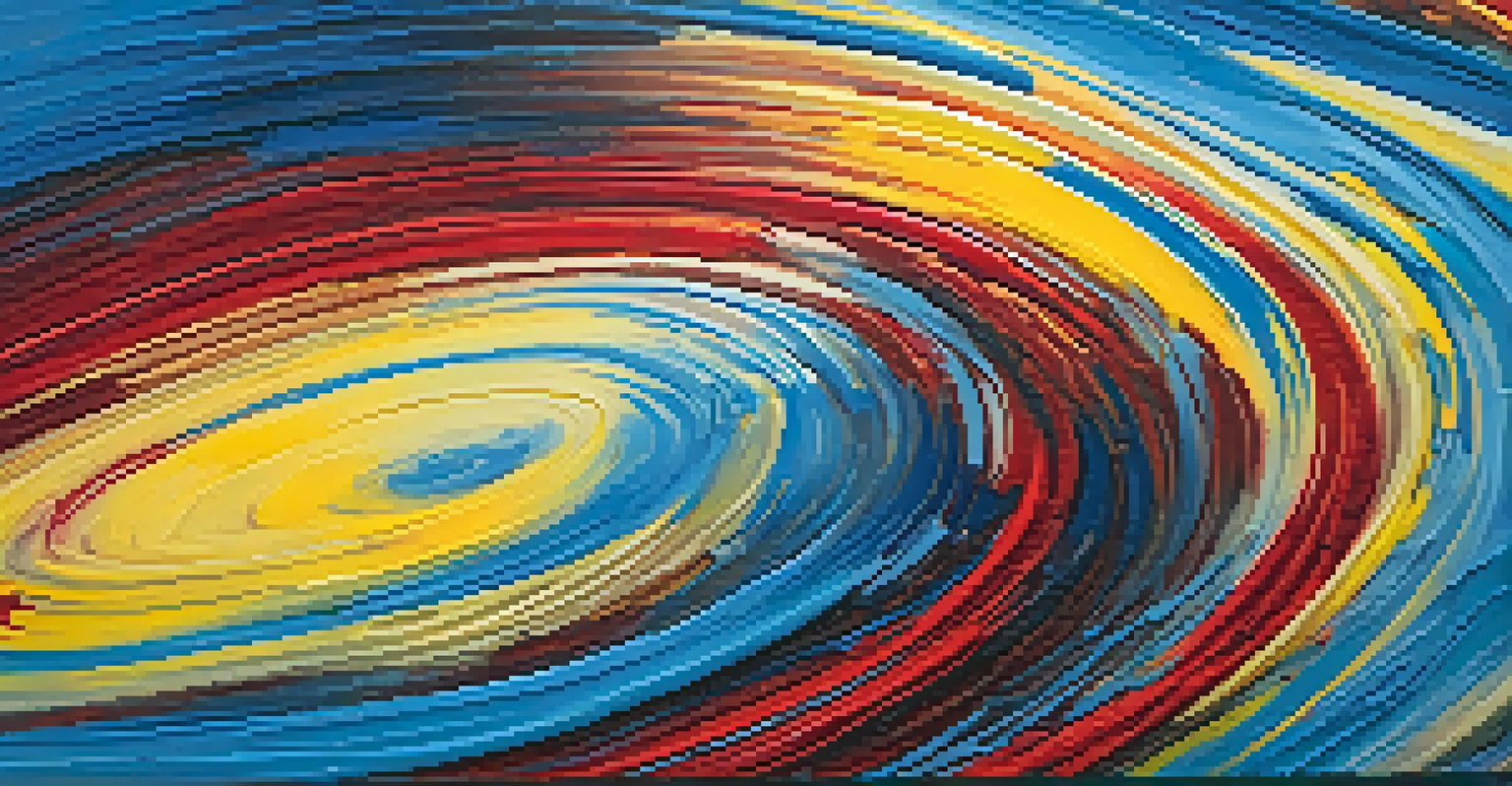The Role of Emotion in Art: Feeling and Interpretation

Understanding Emotion's Role in Art Interpretation
Art is not just a visual experience; it evokes emotions that deeply influence how we interpret it. When we engage with a piece of art, our feelings can shift our perception and understanding, often leading to unique interpretations. For instance, a vibrant painting may evoke joy, while darker hues might stir feelings of melancholy. This emotional response is integral to our connection with art, making it a personal experience.
Art is the most beautiful of all lies.
Moreover, emotions can be contagious. When we view a piece created during a tumultuous time, we might feel a sense of unrest or empathy, mirroring the artist's feelings. This bond creates a dialogue between the viewer and the artwork, enhancing its significance. In essence, our emotional state acts as a lens through which we see and interpret art.
Related Resource
Understanding how emotions play a role in interpretation allows us to appreciate art on a deeper level. It encourages us to explore our feelings and thoughts as we engage with different pieces, creating a richer experience. Each interaction with art can become a unique journey, shaped by our emotional landscape.
The Artist's Emotional Expression in Their Work
Artists often channel their emotions into their creations, making their personal experiences a vital part of their work. This emotional expression can range from joy to despair, revealing the artist's inner world. For example, Vincent van Gogh's turbulent emotions are famously reflected in his swirling brushstrokes and vibrant colors, inviting viewers into his psyche.

When artists openly express their feelings, it resonates with audiences, allowing them to connect on a human level. This connection can evoke empathy and understanding, bridging gaps between different experiences and backgrounds. As viewers, we often find solace in knowing that others have felt similar emotions, enhancing our appreciation of the artwork.
Emotions Shape Art Interpretation
Our emotional responses significantly influence how we perceive and interpret art, making each experience unique.
Ultimately, an artist's emotional expression not only shapes the work itself but also influences how we, as viewers, feel and respond to it. This symbiotic relationship between artist and audience fosters a rich dialogue, making art a powerful tool for emotional connection and expression.
Cultural Context and Emotional Resonance in Art
Cultural context plays a significant role in shaping how emotions are expressed and interpreted in art. Different cultures have unique ways of conveying feelings, which can influence how we perceive a piece of art. For instance, colors have different meanings across cultures; red might symbolize luck in one culture and danger in another, altering our emotional response.
Every artist dips his brush in his own soul, and paints his own nature into his pictures.
As we explore art from various cultural backgrounds, we gain insights into the emotions and values of those societies. By understanding these contexts, we can appreciate the nuances of emotional expression, enriching our interpretation. This cultural lens allows us to see beyond our personal biases, fostering greater empathy and understanding.
Related Resource
Thus, recognizing the cultural underpinnings of art helps us appreciate its emotional depth. It encourages us to approach each piece with an open mind, ready to explore the myriad feelings it may evoke based on its cultural origins.
The Impact of Personal Experience on Art Interpretation
Our personal experiences significantly shape how we interpret art and the emotions it evokes. Each viewer brings their own history, memories, and feelings to the table, influencing their perception of a piece. For example, someone who has experienced loss might interpret a melancholic painting in a deeply personal way, while another viewer may see it as simply a beautiful work of art.
This subjectivity is what makes art so fascinating and powerful. It allows for a broad spectrum of interpretations, as each viewer's emotional response is rooted in their individual experiences. Art can serve as a mirror, reflecting our own feelings and thoughts back at us, often in unexpected ways.
Cultural Context Influences Emotion
Understanding the cultural background of art enriches our emotional interpretation and fosters empathy.
By acknowledging the influence of our personal experiences, we can engage more meaningfully with art. It encourages us to reflect on our emotions and consider how they shape our understanding, ultimately deepening our connection to the artwork.
Emotional Responses to Different Art Forms
Different art forms elicit varying emotional responses, each offering a unique way to connect with feelings. For instance, a theatrical performance might evoke a visceral reaction through live storytelling, while a painting invites introspection and contemplation. Music, on the other hand, can stir emotions through melody and rhythm, often resonating with our own life experiences.
The diversity of art forms allows for a rich tapestry of emotional expression. A single theme, like love or loss, can be explored through painting, music, literature, or film, each providing a distinct emotional journey. This variety enriches our understanding of emotions, as we can experience them from multiple perspectives.
Related Resource
Ultimately, engaging with different art forms broadens our emotional vocabulary. It helps us appreciate the complexity of feelings and how they can be expressed, leading to a more profound understanding of both art and ourselves.
The Therapeutic Power of Art and Emotion
Art has long been recognized for its therapeutic benefits, offering a powerful outlet for emotional expression. Engaging with art—whether through creating or viewing—can provide relief from stress, anxiety, and sadness. For many, expressing emotions through art becomes a form of healing, allowing them to process feelings that might otherwise be hard to articulate.
Art therapy is a growing field that harnesses this emotional power, helping individuals explore their feelings in a supportive environment. By creating art, people can confront their emotions and gain new insights into their experiences. This process can be transformative, leading to greater self-awareness and emotional resilience.
Art as a Therapeutic Outlet
Engaging with art serves as a powerful tool for emotional expression and mental well-being, offering transformative healing benefits.
The therapeutic power of art underscores its significance in our lives. It serves as a reminder that emotions are not only valid but can also be expressed and understood through creative avenues, promoting mental well-being.
The Future of Emotion in Art and Its Interpretation
As we move further into the digital age, the role of emotion in art continues to evolve. New technologies are enabling artists to explore and express emotions in innovative ways, such as through virtual reality or interactive installations. These advancements can create immersive experiences that deepen emotional engagement, allowing viewers to feel more connected to the artwork.
Furthermore, the rise of social media has transformed how we share and interpret art. Artists can now reach global audiences instantly, inviting diverse emotional responses and interpretations. This democratization of art encourages a broader dialogue about emotions, fostering a community that values shared experiences and feelings.

Looking ahead, the interplay between emotion and art will likely become even more intricate. As artists and audiences navigate this evolving landscape, the emotional resonance of art will continue to shape our understanding of ourselves and each other, making art an ever-relevant medium for human connection.